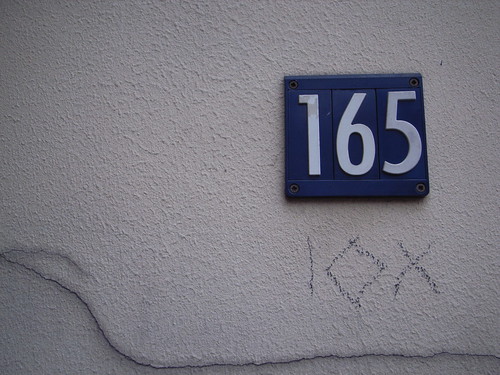Last week in Brussels, I ran across this signs on the wall of that house:

It quickly reminded me my parents' house on which we found the same marks. At that time, I remember the discussion with local police who told us that burglars use codes to annotate house. It's generally tags like this, with black chalk that express relevant information for them such as the one exemplified below (as shown in France's signs or Belgium's signs).

Simply put, it means that the marks on that belgian house correspond to: one kid, unoccupied house and planned robbery. Although it's weird to imagine only one kid in an unoccupied house, this is what the tag describe.
Why do I blog this? that's an interesting example of location-based annotation. It simply shows an intriguing signal of practices at stake in contemporary cities, a specific form of graffiti that aims at describing places to rob. It's a different form of spatial tagging not that explored by the locative media frenziness (for obvious reasons) that also represents the "transparent society" we're reaching. See here too.
In addition, it's curious from a collaboration POV, how this sort of tagging has been put in place by a group of people. At first glance, one can think burglary is a competitive practice, but it can go beyond that, as shown by the establishment of a common vocabulary.